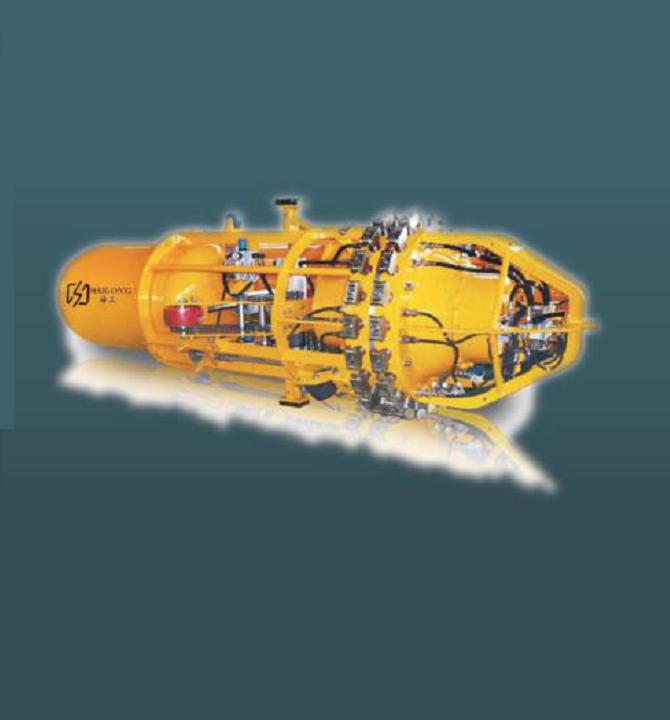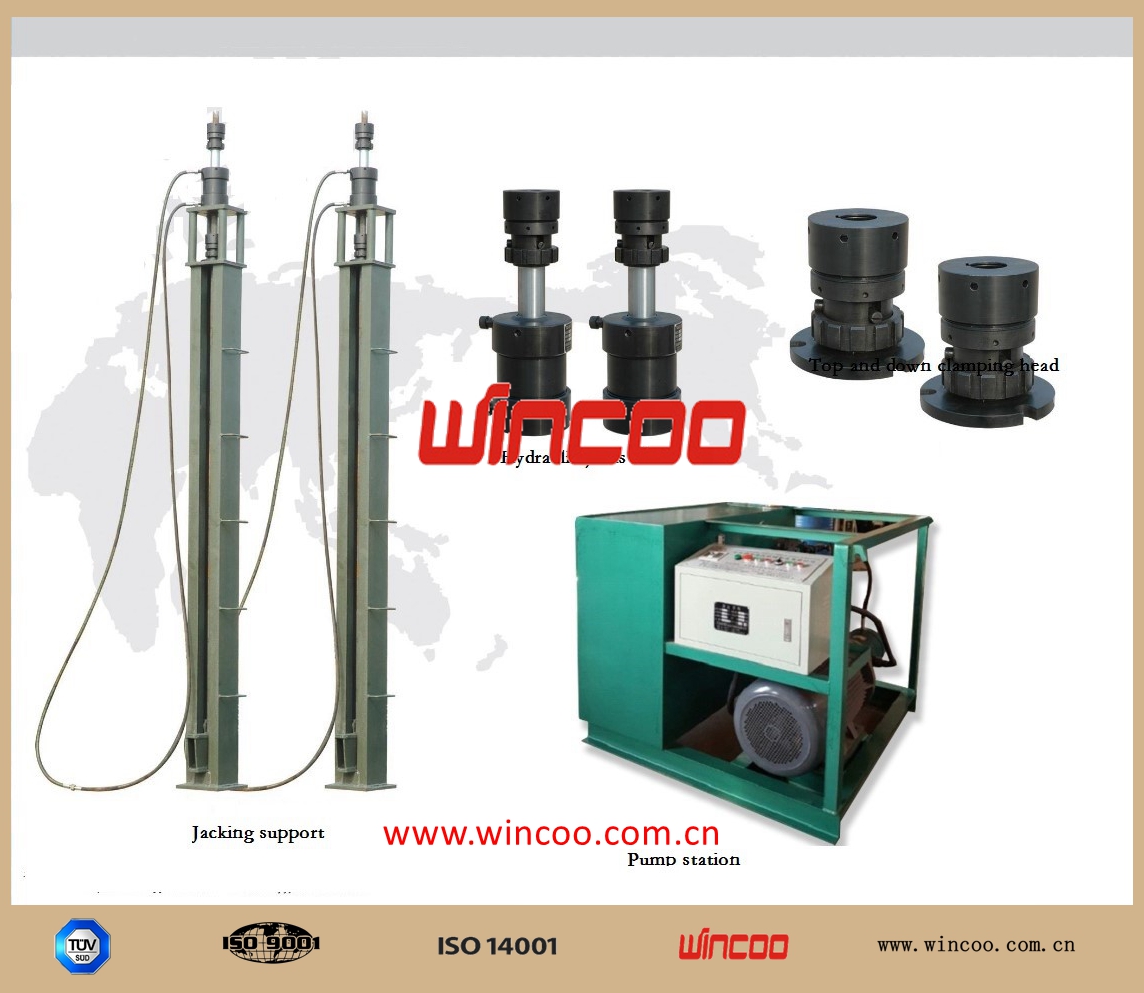
1.pump station
Maximum pressure:25MPa | Power:11KW |
Rated oil flow:60L/min | Motor rotate speed:1470r/min |
oil tank capacity:360L | System temperature :20-60ºC |
oil filter precision:20υm | Voltage:220W |
System oil type:L-HM46# antiwear hydraulic oil | Total weight:360Kg |
Outsize(mm): 1100*750*1000 |
2.Jacks
theory lifting capacity:125KN | Rated lift capacity:120KN |
rated oil pressure:12MPa | Hydraulic stroke:100±0.5mm |
Glissade capacity:≤5mm | weight:≤20Kg |
Installation size for up and down chuck: settle 3 *14U hole on the circumference of a φ120 circle | |
Size(mm):160*160*490 | |
Suitable lifting rod:φ30round steel(45#) | |
chuck device: screw mechanism | |
3.Jack support
Total height:4460mm (will be confirmed after design) | Lifting rod height:3900mm |
Slider stroke:3630mm (will be confirmed after design) | |
distance between expansion loop support to ground:310mm |
Principle of the 12t hydraulic jacks system
Principle of the erection system
The following short description gives the working procedure in outline. It can in certain details be modified when required.
Step 1. The tank bottom - plates are placed on the prepared foundation and welded together.
Step 2. The beams or lattice work of the roof are assembled and finally joined to the upper rim of the shell ring.
Step 3. The jacking equipment is installed in the tank. The plates of the second shell ring (next to the top ring) are positioned outside the first one.
Step 4. The completed part of the tank (roof and top shell ring) is lifted hydraulically to a height at which the plates of the second ring can be moved into place and the roof sheeting can be completed.
Step 5. The plates of the second shell ring are located exactly and welded together to the lower edge of the first ring.
Step 6. The plates of the third shell ring are placed outside the second shell ring.
Step 7. The completed part of the tank (roof the two uppermost shell rings) is lifted.
Step 8. The above cycle of operations is repeated until the last (bottom) shell ring is finished.
Step 9. The entire tank is lowered down to the bottom plate and welded to this.
Step 10. The lifting equipment is dismantled.
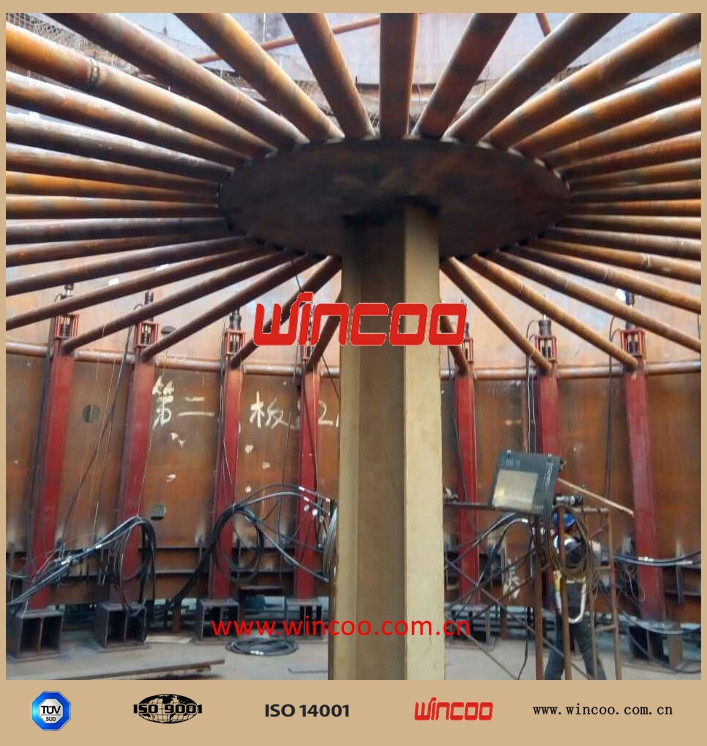
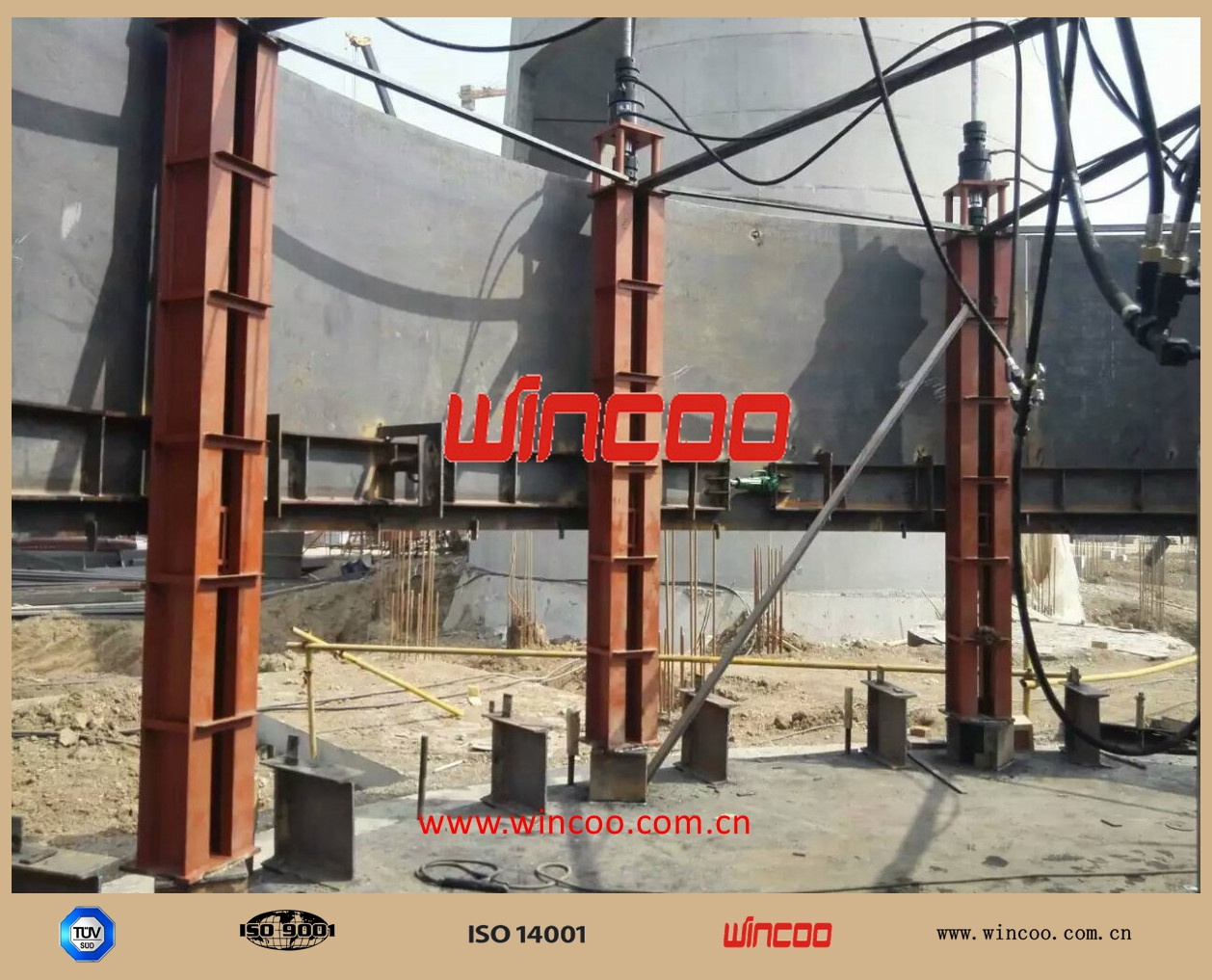
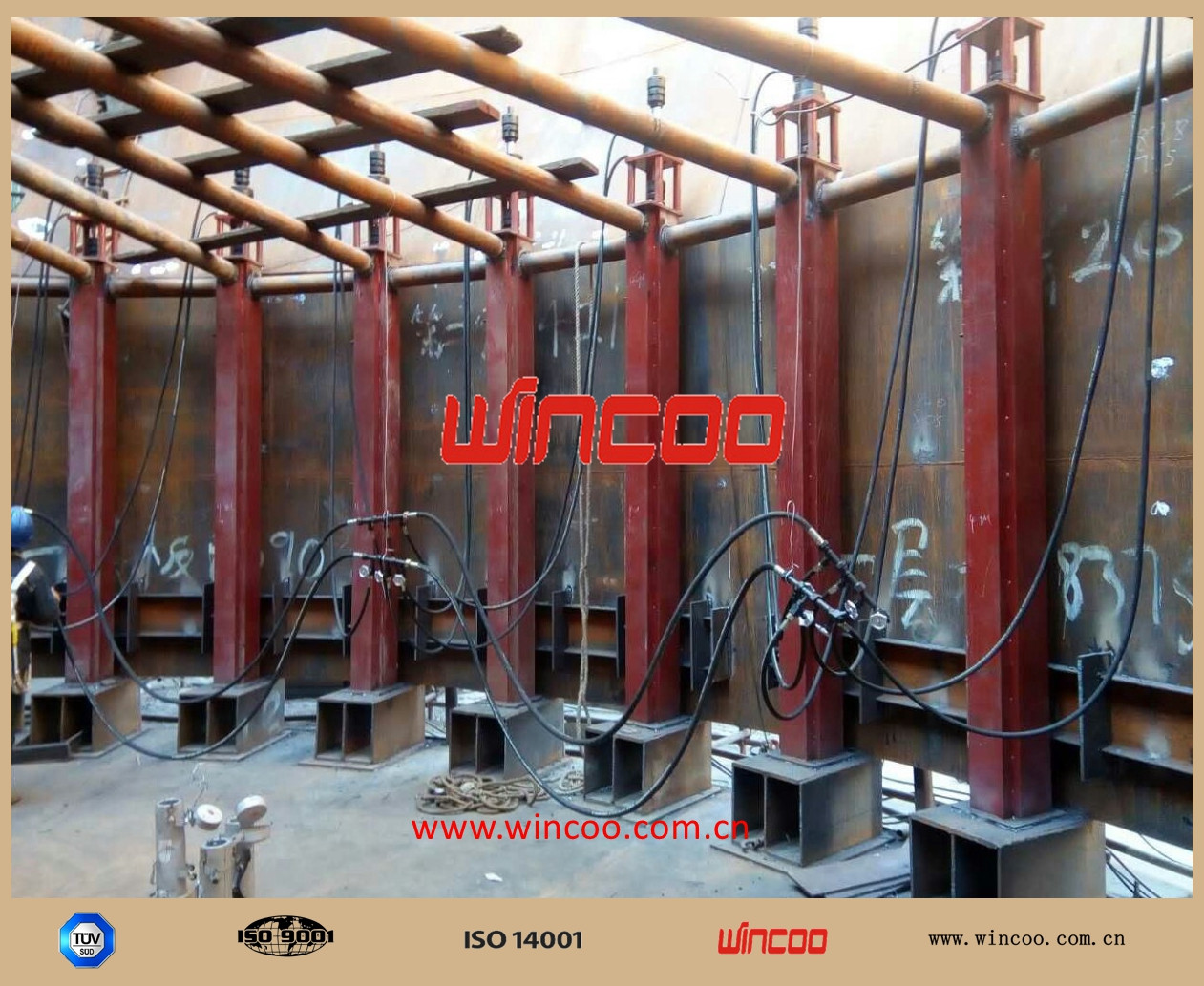
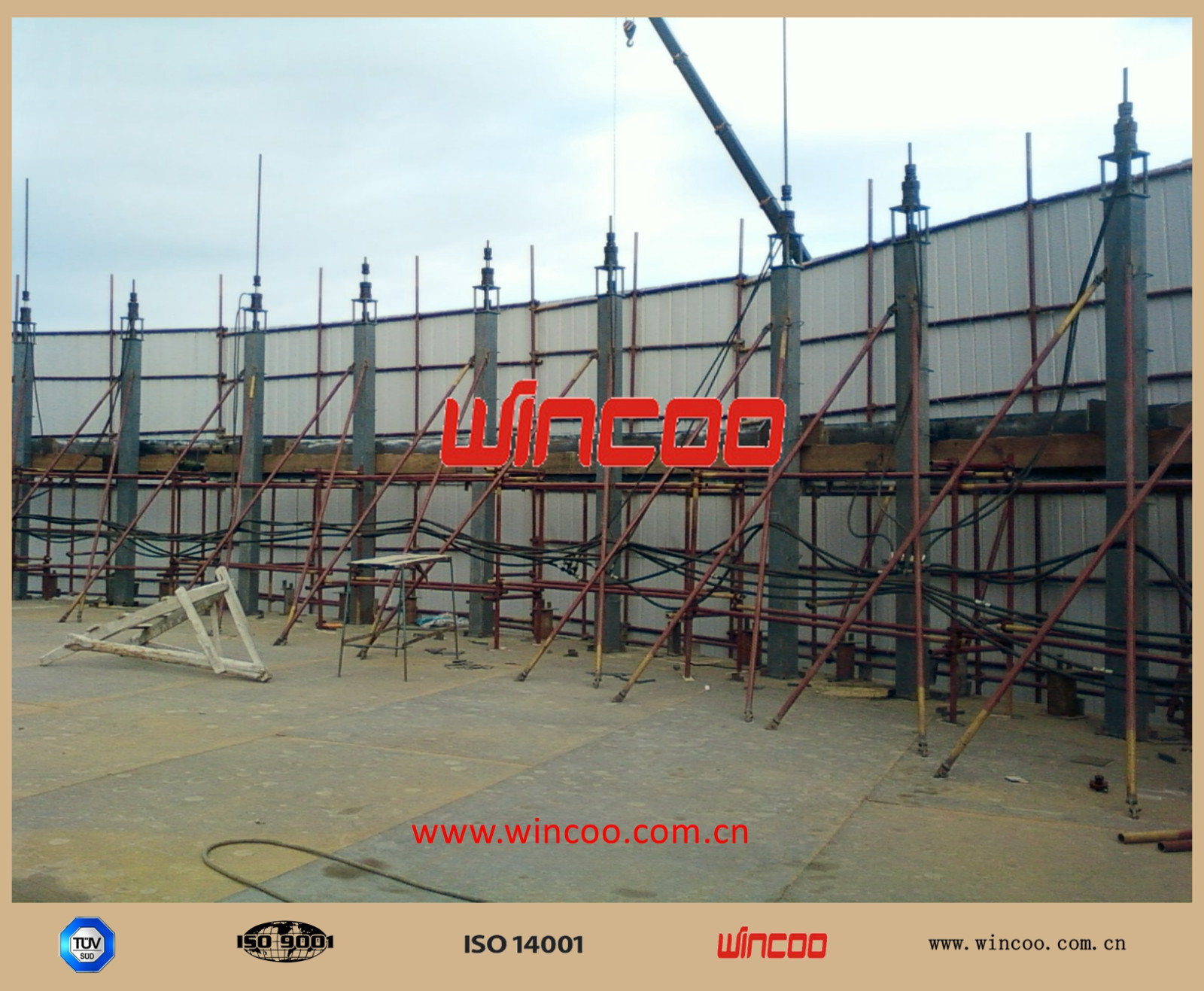
Related products



